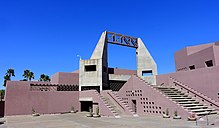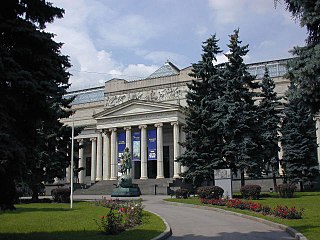
The Pushkin State Museum of Fine Arts is the largest museum of European art in Moscow, located in Volkhonka street, just opposite the Cathedral of Christ the Saviour. The International musical festival Sviatoslav Richter's December nights has been held in the Pushkin Museum since 1981.
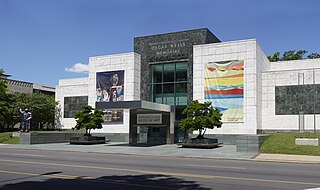
Founded in 1951, the Birmingham Museum of Art in Birmingham, Alabama, today has one of the finest collections in the Southeastern United States, with more than 24,000 paintings, sculptures, prints, drawings, and decorative arts representing a numerous diverse cultures, including Asian, European, American, African, Pre-Columbian, and Native American. Among other highlights, the Museum’s collection of Asian art is considered the finest and most comprehensive in the Southeast, and its Vietnamese ceramics one of the finest in the U.S. The Museum also is home to a remarkable Kress Collection of Renaissance and Baroque paintings, sculpture, and decorative arts from the late 13th century to c.1750, and the 18th-century European decorative arts include superior examples of English ceramics and French furniture.
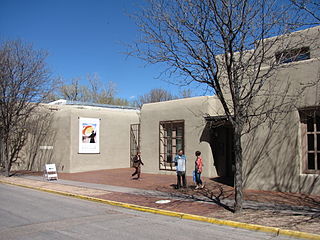
The Georgia O'Keeffe Museum is dedicated to the artistic legacy of Georgia O'Keeffe, her life, American modernism, and public engagement. It opened on July 17, 1997, eleven years after the artist's death. It comprises multiple sites in two locations: Santa Fe, New Mexico, and Abiquiu, New Mexico. In addition to the founding Georgia O'Keeffe Museum in Santa Fe, the O'Keeffe includes: the Library and Archive within its research center at the historic A.M. Bergere house; the Education Annex for youth and public programming; Georgia O'Keeffe's historic Abiquiu Home and Studio; the O'Keeffe Welcome Center in Abiquiu; and Museum Stores in both Santa Fe and Abiquiu. Georgia O'Keeffe's additional home at the Ghost Ranch property is also part of the O'Keeffe Museum's assets, but is not open to the public.

The Brauer Museum of Art is home to a collection of 19th- and 20th-century American art, world religious art, and Midwestern regional art. It is located in the Valparaiso University Center for the Arts (VUCA) on the campus of Valparaiso University in Valparaiso, Indiana, US. Prior to the museum's opening, the university's collection was housed and displayed within several buildings across campus. It was named the Brauer Museum of Art in 1996 to honor the collection's long-time director and curator, Richard H. W. Brauer.
Akio Takamori was a Japanese-American ceramic sculptor and was a faculty member at the University of Washington in Seattle, Washington.

The Kalamazoo Institute of Arts (KIA) is a non-profit art museum and school in downtown Kalamazoo, Michigan, United States.

The Frances Lehman Loeb Art Center is a teaching museum, major art repository, and exhibition space on the campus of Vassar College, in Poughkeepsie, New York, United States. It was founded in 1864 as the Vassar College Art Gallery. It displays works from antiquity to contemporary times. Vassar was the first college or university in the country to include an art museum as part of its original plan. The current 36,000-square-foot (3,300 m2) facility was designed by César Pelli and named in honor of the new building’s primary donor Frances Lehman Loeb, a member of the Class of 1928.

Museum of Art, Rhode Island School of Design is an art museum in Providence affiliated with the Rhode Island School of Design, in the U.S. state of Rhode Island. The museum was founded in 1877 and is the 20th largest art museum in the United States.
Adrian Saxe is an American ceramic artist who was born in Glendale, California in 1943. He lives and works in Los Angeles, California.

The Fred Jones Jr. Museum of Art is an art museum on the University of Oklahoma campus in Norman, Oklahoma.
The Roswell Museum is located in Roswell, New Mexico, United States, and features exhibits about the art and history of the American Southwest. Exhibits include fine art, sculpture, prints, decorative arts, and historic artifacts.

The University of Arizona Museum of Art (UAMA) is an art museum in Tucson, Arizona, operated by the University of Arizona. The museum's permanent collection includes more than 6,000 works of art, including paintings, sculptures, prints and drawings with an emphasis on European and American fine art from the Renaissance to the present.

The University of New Mexico Art Museum is an art museum at the University of New Mexico in Albuquerque. The museum's permanent collection includes nearly 30,000 objects, making it the largest collection of fine art in New Mexico.

The Palmer Museum of Art is the art museum of Pennsylvania State University, located on the University Park campus in State College, Pennsylvania.

Cheryl Tall is an American visual artist whose work is primarily in the medium of sculpture and large wall installations in addition to, mixed-media, oil and acrylic painting. Tall is most notable for her intricate sculptures and her works have been in prominent and private collections all over the world. She has an MFA from the University of Miami and her present art studio is in Leucadia, CA.

Anna Miller Corbell (1896–1993) was an early 20th century American artist, known for her panoramic landscape paintings of the American Southwest. Corbell was active as a painter for over thirty years. Her subject matter largely consisted of the Southwestern desert with mountain views. Describing herself as "not a modern painter," she worked in a palette of pastel hues to capture the colors and light of the Arizona desert.
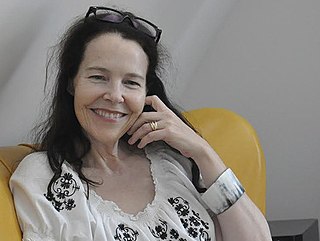
Angela Ellsworth is a multidisciplinary American artist traversing disciplines of drawing, sculpture, installation, video, and performance. Her solo and collaborative works have addressed wide-ranging subjects such as physical fitness, endurance, illness, social ritual, and religious tradition. She is interested in art merging with everyday life and public and private experiences colliding in unexpected places. She is a descendant of LDS prophet Lorenzo Snow and was raised as a Mormon; some of her work relates to her religious upbringing. She is openly queer and married to writer/ performer Tania Katan.
Richard Shaw is an American ceramicist and professor known for his trompe-l'œil style. A term often associated with paintings, referring to the illusion that a two-dimensional surface is three-dimensional. In Shaw's work, it refers to his replication of everyday objects in porcelain. He then glazes these components and groups them in unexpected and even jarring combinations. Interested in how objects can reflect a person or identity, Shaw poses questions regarding the relationship between appearances and reality.
Kurt Weiser is an American ceramicist and professor. His work—explorations of the relationship between man and nature through narratives rendered in vivid color—are described as "Eden-like." His work has often taken the form of teapots, vases, and cups, though he has recently begun crafting globes as well. Weiser is currently the Regents Professor at Arizona State University's School of Art.
Chris Gustin is an American ceramicist. Gustin models his work on the human form, which is shown through the shape, color, and size of the pieces.
